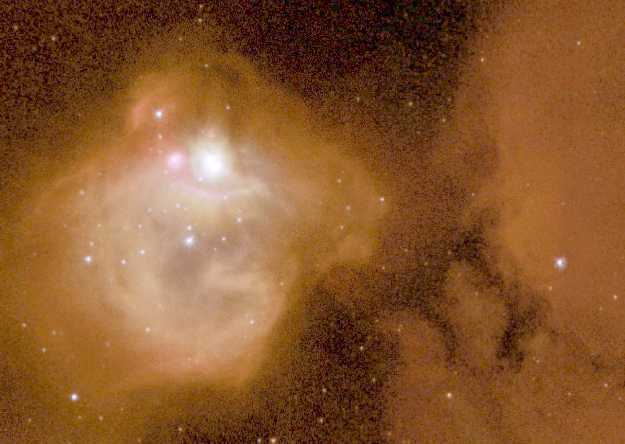Explanation: NGC 1748 cannot contain all the new stars it has formed. The young stars, the most massive of which are bright blue, emit so much energy they are pushing out and dispersing the gas and dust that comprise this star forming nebula. Within only the past hundred thousand years, these stars have altered the bubble-like shape of the nebula and will likely destroy the nebula over the next few million years. Of particular interest is a bright region surrounded by a pink ring of dust and gas visible on the left of the above recently released picture by the Hubble Space Telescope. The center of this region is being evacuated by the wind of the brightest star in the nebula. A lane of cooler dust connects NGC 1748 to a larger more diffuse nebula seen on the right. NGC 1748 spans about 25 light-years in diameter and can be found in our galactic neighbor: the Large Magellanic Cloud.
1999 2000 2001 2002 2003 2004 2005 2006 2007 2008 2009 2010 2011 2012 2013 2014 2015 2016 2017 2018 2019 2020 2021 2022 2023 2024 2025 |
Yanvar' Fevral' Mart Aprel' Mai Iyun' Iyul' Avgust Sentyabr' Oktyabr' Noyabr' Dekabr' |
NASA Web Site Statements, Warnings, and Disclaimers
NASA Official: Jay Norris. Specific rights apply.
A service of: LHEA at NASA / GSFC
& Michigan Tech. U.
|
Publikacii s klyuchevymi slovami:
LMC - stellar nursery - NGC 1748 - Maloe Magellanovo Oblako - zvezdnaya kolybel'
Publikacii so slovami: LMC - stellar nursery - NGC 1748 - Maloe Magellanovo Oblako - zvezdnaya kolybel' | |
Sm. takzhe:
Vse publikacii na tu zhe temu >> | |
